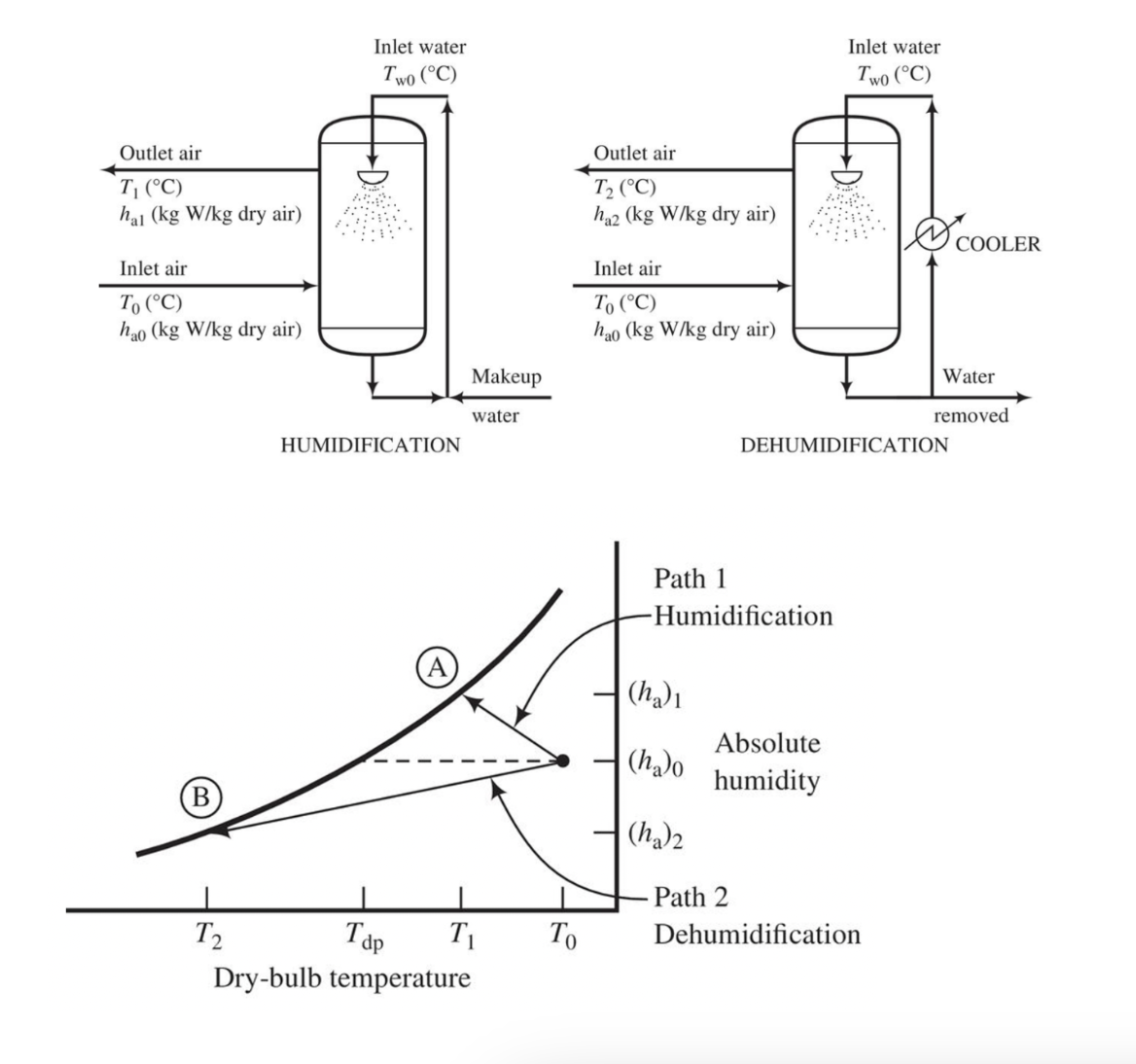Answered step by step
Verified Expert Solution
Question
1 Approved Answer
Spray cooling is a technique for cooling and either humidifying or dehumidifying air by contacting it with a spray of liquid water. The liquid water
Spray cooling is a technique for cooling and either humidifying or dehumidifying air by contacting it with a spray of liquid water. The liquid water leaving the tower is recirculated and, in the case of dehumidification, cooled before reentering the tower.
Two possible paths on the psychrometric chart corresponding to two different entering liquid temperatures are shown below. On the chart, T and Tdp are the drybulb temperature and dew point of the entering air, respectively.
Path A: The entering liquid temperature Tw is above the dew point of the entering air. Liquid water evaporates into the superheated air, causing the absolute humidity of the air to increase the path rises and both the evaporation and the contact with the cold liquid cause the air temperature to decrease the path moves to the left
Path B: The entering liquid temperature is below the dew point of the entering air. The temperature of the air contacted by the cold spray drops below the dew point the path again moves to the left and water vapor condenses out of the air the path moves down
Thus, water can be removed from the air by spraying water into it provided that the temperature of the entering liquid is below the dew point of the entering air.
Use the psychrometric chart to solve the following spraycooling problems include your work on the diagram with your submission
A spray tower cools and humidifies air with drybulb and wetbulb temperatures of deg C and deg C respectively. The air emerges from the tower at deg C The tower operation is such that the air follows an adiabatic humidification curve a constant wetbulb temperature line on the psychrometric chart How much water must be added as makeup per kg of dry air treated?
A stream of air at deg C and relative humidity flowing at a rate of kgh is to be cooled to deg C and dehumidified in a spray tower. The air is saturated as it emerges from the tower. Liquid water leaves the tower at deg C; some is withdrawn, and the rest is cooled and recirculated. No heat is transferred between the tower and its surroundings. Calculate the rate kgh at which water must be withdrawn from the recirculation loop and the heat duty on the cooler kWSuggestion: Use an overall energy balance for the latter calculation.
A nonengineering friend of yours heard someone say that you can remove water from air by spraying water into it They thought that sounded strange and came to you to you for clarification. They first ask Is that possible? and then adds, If it is how does it work? In a short paragraph, state what you would tell them.HUMIDIFICATION
DEHUMIDIFICATION

Step by Step Solution
There are 3 Steps involved in it
Step: 1

Get Instant Access to Expert-Tailored Solutions
See step-by-step solutions with expert insights and AI powered tools for academic success
Step: 2

Step: 3

Ace Your Homework with AI
Get the answers you need in no time with our AI-driven, step-by-step assistance
Get Started


